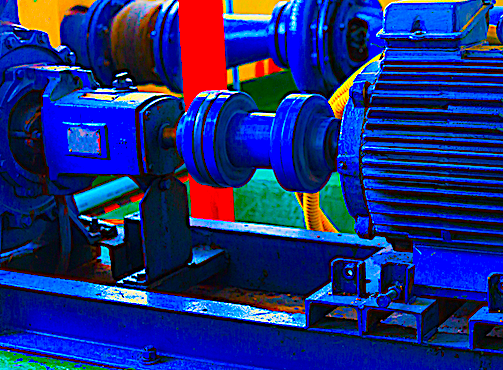Cursory soft-foot checks are often performed as means of “checking the box” at the start of an alignment process. If, however, we are to eradicate soft foot from the industrial landscape, these checks need to become an integral part of the alignment process and be perceived as a time-saving tool.
Soft foot is the condition on a machine, where a foot and/or multiple feet are not within the same plane and supporting the weight equally. This seemingly innocuous error affects machines and components in a very negative way, significantly reducing their service life.
Take, for example, electric motors: The slight frame distortion from soft foot changes the electrical and magnetic characteristics of the windings, which leads to electrical imbalance, elevated winding temperature, and, inevitably, shortened insulation life.
With rolling-element bearings, soft foot causes housing distortion that reduces the already-small internal clearance and compromises the lubricating film. In terms of achieving precision alignment, soft foot will cause the machine to behave erratically leading to large doses of frustration, increased time to perform an alignment, and frequent (and needless) “re-calibrations” of the laser system.
WHY SOFT FOOT IS STILL A PROBLEM: POSSIBLE REASONS
♦ Technicians may not think soft foot is important.
I think part of the problem is that some really do not understand the seriousness of the problem, and therefore pay lip service to the checks required.
♦ Technicians may think checking and correcting takes too long.
We often perceive that the checks and corrections required to eliminate soft foot are too time-consuming and have no value. Last year, I was at a facility where we studied the amount of time taken to complete a typical alignment job. This data was pulled from the CMMS system (they were doing a grand job of documenting BTW). Across the population of 40 or so technicians, only two were known to be meticulous in their preparation for alignment. As part of their pre-alignment work, they routinely performed detailed soft-foot checks, correcting both short leg and angle soft foot. Looking at what was involved in completing alignments, these technicians routinely took around 60% to 70% of the time compared to the others despite often getting the most difficult jobs. They also ended up with more precisely aligned machines.
♦ We may not be setting the correct expectations for technicians.
When we ask our technicians to perform an alignment, are we setting the expectation that as part of that task they should be performing (among many other pre-alignment checks) a short leg and angle foot check and correction? If we don’t clearly define that expectation then it likely won’t get done.
♦ We may think equipment feet are machined flat in the factory.
Another popular misconception is that because the bottoms of equipment feet are supposedly machined in the factory. there is no soft foot. A brief review of the NEMA (National Electrical Manufacturers Association) standard for soft foot on motors is very revealing: The association does not have a soft-foot standard.
NEMA does, however, have a tolerance for the dimension from the shaft centerline to the planes of the feet. That tolerance is 0.030” (0.75mm)! While I have not reviewed any European or other international standards, I doubt that they address soft foot. Observations in the field show us that anything greater than 0.002” (0.005mm) can have a measurable negative effect on the machine.
♦ We may not be considering whether the base is actually flat.
Even if the feet of the machine are perfect, that doesn’t necessarily meant that the base is flat.
♦ We may not be shimming correctly.
When correcting vertical misalignment, are we following good shimming practices? Best practices are that there should be no more that three shims under any foot, and that all shim packs should be checked with a micrometer of caliper prior to installation under the feet. This is why we recommend that technician check for soft foot before, during, and after the alignment process, lest they inadvertently create a soft foot while changing, i.e., adding and/or removing, shims.
COMING UP
Next week, we take a look at how to properly check for and eliminate soft foot.TRR
ABOUT THE AUTHOR
Tim Dunton is the Director of Product Development and thought leader for Reliability Solutions, a UT-RMC training partner based in Northwest Florida. He has over 40 years of experience in vibration analysis and technical training related to the reliability of rotating machinery, including extensive work and qualifications in machinery troubleshooting, problem-solving, and condition-monitoring program design, implementation and operation. His background also includes significant experience in workforce development, curriculum development, instructional design, and Reliable Manufacturing. Dunton holds DTI Class 1 Certification, CMRP, and CMRT Certifications. Email: timdunton@reliabilitysolutions.net.
Tags: reliability, maintenance, availability, RAM, soft foot, machine alignment, shims, equipment baseplates, maintenance management, change management, workforce issues, skills development, training and qualification



